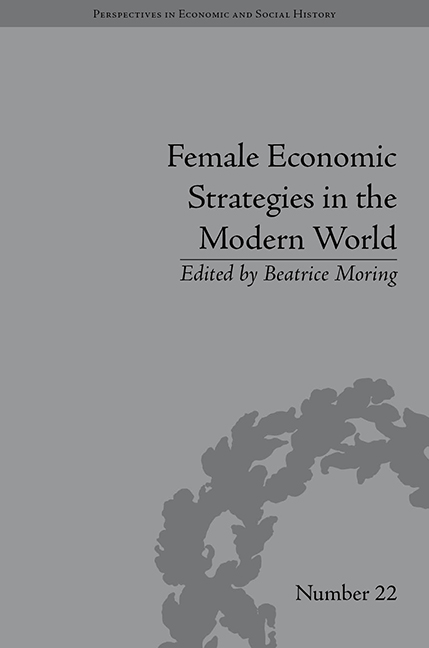Book contents
- Frontmatter
- Contents
- List of Contributors
- List of Tables
- Introduction
- 1 Widows, Family and Poor Relief in England from the Sixteenth to the Twentieth Century
- 2 Survival Strategies of Poor Women in Two Localities in Guipuzcoa (Northern Spain) in the Nineteenth and Twentieth Centuries
- 3 Women, Work and Survival Strategies in Urban Northern Europe before the First World War
- 4 Women, Households and Independence under the Old English Poor Laws
- 5 The Economic Strategies of Widows in Switzerland from the mid-Nineteenth to the mid-Twentieth Century
- 6 Mexico: Women and Poverty (1994–2004): Progresa-Oportunidades Conditional Cash Transfer Programme
- 7 Gender and Migration in the Pyrenees in the Nineteenth Century: Gender-Differentiated Patterns and Destinies
- 8 Women and Property in Eighteenth-Century Austria: Separate Property, Usufruct and Ownership in Different Family Configurations
- Notes
- Index
7 - Gender and Migration in the Pyrenees in the Nineteenth Century: Gender-Differentiated Patterns and Destinies
- Frontmatter
- Contents
- List of Contributors
- List of Tables
- Introduction
- 1 Widows, Family and Poor Relief in England from the Sixteenth to the Twentieth Century
- 2 Survival Strategies of Poor Women in Two Localities in Guipuzcoa (Northern Spain) in the Nineteenth and Twentieth Centuries
- 3 Women, Work and Survival Strategies in Urban Northern Europe before the First World War
- 4 Women, Households and Independence under the Old English Poor Laws
- 5 The Economic Strategies of Widows in Switzerland from the mid-Nineteenth to the mid-Twentieth Century
- 6 Mexico: Women and Poverty (1994–2004): Progresa-Oportunidades Conditional Cash Transfer Programme
- 7 Gender and Migration in the Pyrenees in the Nineteenth Century: Gender-Differentiated Patterns and Destinies
- 8 Women and Property in Eighteenth-Century Austria: Separate Property, Usufruct and Ownership in Different Family Configurations
- Notes
- Index
Summary
Introduction
Pyrenean emigration to America in the nineteenth and twentieth centuries has been the object of great attention and extensive research in France and in America, because of the size and length of this movement from a French perspective, and the rich data set available to analyse the trans-continental migration. Documentation indicates that these French Pyreneans envisaged overseas migration in the same way as other French groups (from Alsace, Aveyron etc.) in the same period, but they left in greater numbers and during a longer period of time. The movement did not, however, parallel that of some other European countries, the English, the Germans, the Swiss migrated to America in much greater numbers and proportion. The comparatively small migration which characterized France was actually linked to the French adopting Malthusian demographic practices as early as the eighteenth century, while other Europeans did not start reducing births until the next century. Consequently, in the nineteenth century, the French did not experience a demographic explosion on the scale of other Europeans. Fewer people were forced to envisage overseas migration as a solution to excessive population, shrinking economic opportunities in rural areas, and slowly emerging urban industrial development.
French migration to America was definitely less significant than elsewhere in Europe. The only areas with sizable overseas migration were the border regions of France: the Pyrenees (along the French-Spanish border), the Alps (along the French–Italian border), and Alsace (along the French–German border).
- Type
- Chapter
- Information
- Female Economic Strategies in the Modern World , pp. 127 - 144Publisher: Pickering & ChattoFirst published in: 2014



